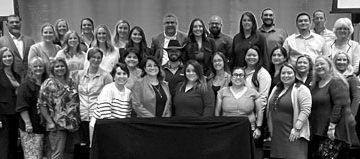Beat the Heat: OSHA Proposed Rule to Protect Workers in Extreme Temps
Under a proposed rule unveiled during the second week of summer, the Occupational Safety and Health Administration would require employers to develop an injury and illness prevention plan to control heat hazards in workplaces affected by excessive indoor or outdoor temperatures.
“Heat Injury and Illness Prevention” calls for employers to evaluate risks and – when increasing temperatures raise worker exposure – implement requirements for drinking water, rest breaks and control of indoor heat. It also requires them to provide training, have procedures to respond if a worker is experiencing signs and symptoms of a heat-related illness, and take immediate action to help a worker experiencing signs or symptoms of a heat emergency.
If finalized, OSHA officials contend, the proposed rule would help protect approximately 36 million workers and substantially reduce workplace heat injuries, illnesses and deaths.
“Workers all over the country are passing out, suffering heat stroke and dying from heat exposure from just doing their jobs. Something must be done to protect them,” said Assistant Secretary for Occupational Safety and Health Doug Parker, adding that the proposed rule “is an important next step in the process to receive public input to craft a ‘win-win’ final rule that protects workers while being practical and workable for employers.”
The agency currently conducts heat-related inspections under its National Emphasis Program – Outdoor and Indoor Heat-Related Hazards, which launched in 2022. The program focuses on inspecting workplaces with the highest exposures to heat-related hazards and has led to over 5,000 federal heat-related inspections in the past two years.
Tips for preventing heat illness
- Hydrate before, during and after work. Drink 1 cup of cool water every 20 minutes even if you aren’t thirsty. For longer jobs, drinks with electrolytes are best. Avoid energy drinks and alcohol.
- Find shade or a cool area for rest breaks that allow your body to recover.
- Dress for the heat. A hat and light-colored, loose-fitting (where allowed), breathable clothing are ideal.
- If wearing a face covering, change it if it becomes wet or soiled. Check on others verbally often.
- Not everyone tolerates heat the same way. Understand personal risk factors.
- Understanding engineering controls, work practices, and PPE.


